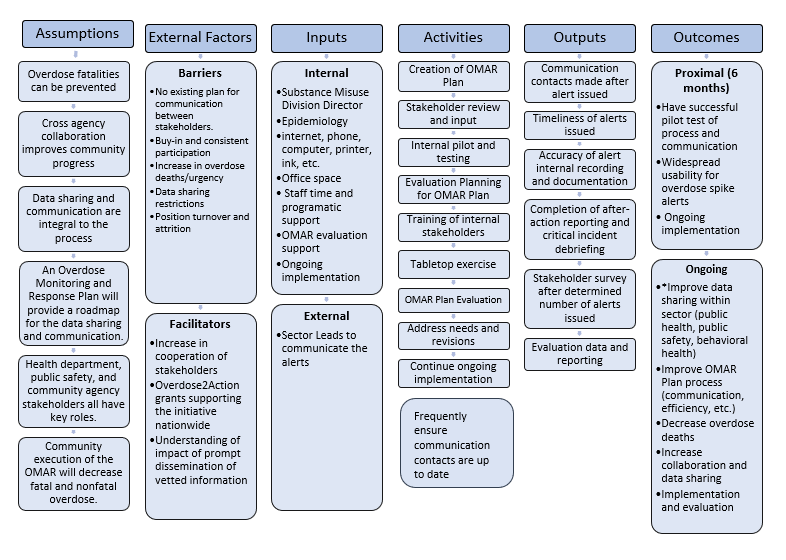
Developing a Logic Model
Last Updated: August 2022
What is a Logic Model?
How Do Logic Models Help in Evaluation?
When logic models are used as a tool in evaluation, they present the shared relationships among resources, activities, outputs, and outcomes/impacts of a program. A logic model depicts the relationship between a program’s activities and its intended effects. Logic models help to provide clarity about a program, identify resources to improve a program, determine the sequence of activities and corresponding outcomes, and are the basis of program evaluation.
What Information is Included in a Logic Model?
A logic model includes the following components:
Assumptions– All models are based on a set of assumptions. These are usually both internal and external to your program or plan. The relationships of the elements in the logic model and the corresponding success are built upon the premise of the research, theories, and knowledge these assumptions are based on.
External Factors- External factors are variables which may have effects on the program or plan but cannot be changed, managed, or controlled by the stakeholders, managers, or participants of the program or plan, such as the effects of COVID-19.
Inputs- Inputs are resources, funding, staff, and other elements provided which contribute to the success of the program or plan.
Activities- Activities are what a program or plan does with the inputs to fulfill the goals and objectives of the program or plan.
Outputs- Outputs are the tangible products or services produced by the program or plan activities.
Outcomes- Outcomes are the intended effects of a program or plan. Outcomes are typically short-term, intermediate, or long-term and are linked to the outputs and activities in the logic model. Types of outcomes may include changes in knowledge, attitudes, beliefs, or behaviors as a result of a program’s activities. Outcomes may also include changes to policies, systems, or environments.
Example of a Logic Model for Overdose Monitoring and Outbreak Response (OMAR)

Toolkit Resources
Get more insights by using our toolkit resources.
Go to Resources
Glossary
Learn the definition of the key words being used.
Go to Glossary
Thanks
Thank you, to all of our contributors.
View our contributors

the public’s health.
Contact Us
Have any questions or recommendations, you can contact us at overdose@cste.org
